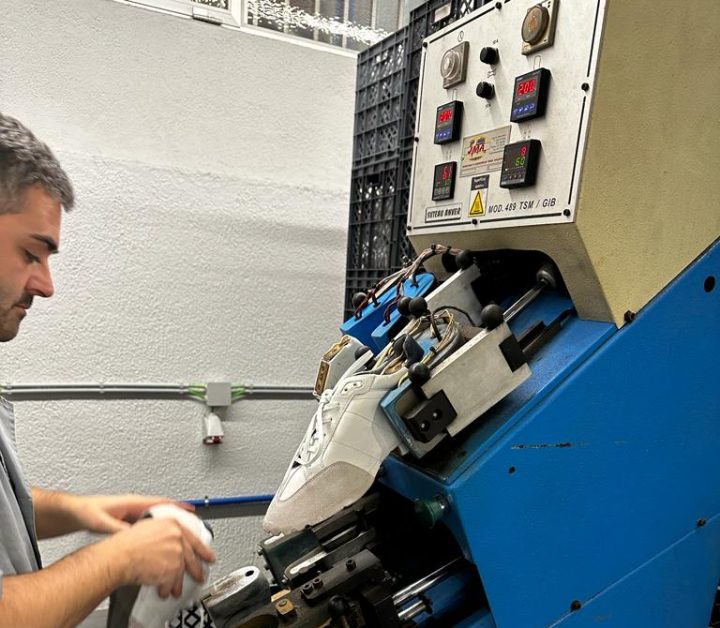“How much does it cost to make a pair of shoes in Portugal?”
This is one of the most common questions we get (and that people often Google).
Well, like most great answers in footwear… it depends.
Let’s break it down together.
Why knowing your costs matters
Before you design, brand, or price your first model, you need to understand what goes into the cost structure. Knowing your costs means knowing your limits — and your potential margins. It’s what separates a creative idea from a real business.
So, how much are we talking?
According to APICCAPS (Portuguese Footwear Association), the AVERAGE price of Portuguese footwear has increased 18% in the last decade, reaching €27.32 per pair in 2024. Portugal exported 67 million pairs of shoes worldwide, to over 170 countries.
That figure reflects the average export price, meaning shoes made in Portugal are positioned as high-value, high-quality products in the global market.
But your actual manufacturing cost (the “factory price”) will vary a lot depending on a few key factors.
What influences the cost of a shoe?
Let’s break it down, step by step:
• Upper Materials – Leather, vegan options, synthetics, recycled… all come with very different costs.
• Outsole – It can be leather, neolite, rubber, TPU, EVA, TR, or a mix — outsole choice is a big price factor.
• Lining – Real leather lining, natural fibers, bamboo, or technical synthetics each have their own cost tier. Full leather lining can double the cost compared to a simple textile.
• Construction type – Cemented, Blake, Goodyear, Strobel. Some need special (expensive) machinery and take longer to produce, pushing up the labor/build cost.
• Packaging – Personalized shoe box, branded dust bags, custom tissue paper, and premium packaging options can really make a big difference in cost.
• Quantity – The more pairs you produce, the lower your unit cost (hello, economy of scale!). Producing 50 vs. 500 pairs can mean a price drop of 10–30% per pair
• Labor Price – Skilled workers in Portugal’s footwear industry earn fair wages and work under good conditions. This means labor costs are higher than in low-wage countries, with an average gross salary of about €1,000/month.
Example of a manufacturing cost structure of barefoot sneakers made in Portugal, based on MOQ 200+ pairs, costs shown in EURO.
| Component | Estimated Cost (Euro) |
| Upper materials (genuine leather. reinforcements, laces and eyelets) | €16 |
| Outsole (rubber) | €9 |
| Lining (technical synthetic) | €5 |
| Labor /skilled, handcrafted) | €11 |
| Branding application (insole, heel tab, tongue) | €4 |
| Custom packaging (box, dust bag) | €3.5 |
| Overheads and Profits | €15 |
| Total Cost Per Pair | €63.5 |
Typical cost examples
Although every project is unique, here’s a broad idea:
• Basic sneakers (synthetic or textile): €20–40/pair
• Premium leather sneakers: €45–70/pair
• Dress shoes (Blake or Goodyear): €90–130/pair
• Handcrafted or designer-level production: €100+ per pair
These ranges include average costs for materials, labor, and overheads in Portuguese factories.
Knowing your manufacturing costs isn’t just about the math — it’s about strategy.
It helps you price smarter, communicate value, and build a brand that thrives long-term.
Next steps
If you’re serious about bringing your shoe brand idea to life and want expert help to map out your costs, strategy, and production path, let’s talk.
Book a personalized strategy call with me, where we’ll deep dive into your brand vision and align it with a realistic, profitable production plan tailored just for you.
Don’t just dream it — let’s make your shoe brand a reality, with confidence and a clear roadmap.

